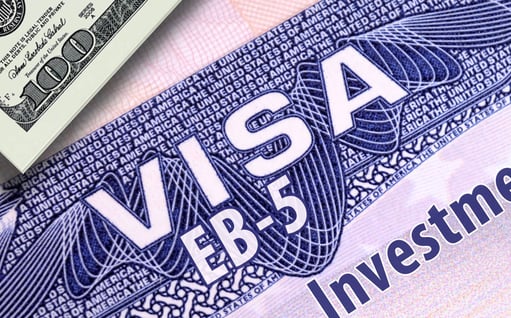
EB-5 Visa Program
Guide to Benefits.
Key Takeaways
The EB-5 Visa offers foreign investors a path to U.S. permanent residency through investment and job creation.
Applicants must meet specific eligibility requirements, including a substantial capital investment into a new commercial enterprise.
A successful EB-5 investment grants the investor and their family conditional permanent residence, leading to citizenship upon fulfillment of program conditions.
Overview of EB-5 Program
Purpose and Benefits
The EB-5 Immigrant Investor Program is designed to stimulate economic growth in the United States through foreign investment. It offers a method for eligible Immigrant Investors to become lawful permanent residents – informally known as “green card” holders – by investing at least $800,000 into a new commercial enterprise that will create a minimum of 10 full-time jobs for U.S. workers. Investors, their spouses, and unmarried children under 21 gain eligibility for a green card.
History and Congressional Intent
The EB-5 Program was created by the U.S. Congress in 1990, through the Immigration Act of 1990, to encourage foreign investment and job creation. In 1992, the Immigrant Investor Program, also known as the Regional Center Program, was introduced to streamline the investment process in specific projects and areas.
Eligibility Requirements
To participate in the EB-5 Immigrant Investor Program, foreign investors must meet specific investment and job creation thresholds. These requirements are enforced by the U.S. Citizenship and Immigration Services (USCIS) to ensure the program stimulates the U.S. economy through foreign capital investment and employment generation.
Investment Thresholds
The EB-5 program mandates a minimum investment of $1,050,000. However, this amount can be reduced to $800,000 if the investment is made within a Targeted Employment Area (TEA), which is either a rural area or one experiencing high unemployment levels.
General Requirement: $1,050,000
TEA Requirement: $800,000
TEAs are designated by USCIS based on various economic factors, and investing in these areas is encouraged as it ensures that the benefits of the program reach the parts of the country that need it most.
Job Creation Criteria
An essential condition for the EB-5 visa is the creation or preservation of at least ten full-time jobs for qualifying U.S. workers within two years of the immigrant investor’s admission to the United States as a Conditional Permanent Resident. In certain cases, USCIS may grant a one-year extension to fulfill this requirement.
Investors must demonstrate that their capital investment will directly or indirectly lead to job creation according to USCIS standards.
Legal and Regulatory Compliance
Foreign investors must prove that they are investing in a bona fide enterprise and that the sourced funds are obtained lawfully. It includes the investor’s legal obligations in adhering to all facets of the program and USCIS guidelines. Furthermore, the program has regulatory measures to minimize risks to both the project and the investor, such as the EB-5 Integrity Fund Fee, to ensure ongoing compliance with program rules.
The Investment Process
1. Choosing an Investment Pathway
Investors have two primary options for EB-5 investment: directly into a new commercial enterprise or through a Regional Center.
Direct investment grants the investor complete control of the business, necessitating a Capital Investment of either $1,050,000 or $800,000 if the enterprise is in a Targeted Employment Area (TEA).
Investing through a Regional Center, officially designated by USCIS, allows investors to pool their funds to finance larger projects, typically in TEAs, and more easily satisfy job creation requirements.
2. Risk and Due Diligence
All EB-5 investments must be ‘At Risk’ to ensure investors are genuinely investing capital and not simply “buying” a visa.
Investors must conduct thorough Due Diligence to evaluate the risks associated with their chosen investment. This includes assessing the project’s financial viability, job-creation potential, and the credibility of the Regional Center or direct investment opportunity.
The EB-5 Visa program bridges the gap between investors seeking U.S. permanent residency and the economic needs of American communities. Established in 1990, this program paves a path for foreign investors to obtain a Green Card by channeling their capital into ventures that boost the economy and create or preserve American jobs.
Considering its potential for providing immigrant investors and their families with a route to lawful permanent residence, the EB-5 stands as a unique component of U.S. immigration policy.
Applicants of the EB-5 visa program must navigate a stringent set of eligibility criteria and a substantial investment process. Funds must be committed to a “new commercial enterprise” in the United States, and their investment should lead to the creation of jobs for U.S. workers.
With this commitment, investors and their immediate family members can secure Green Cards, paving the way for eventual citizenship, provided all program requirements are continually met during the prescribed period.


